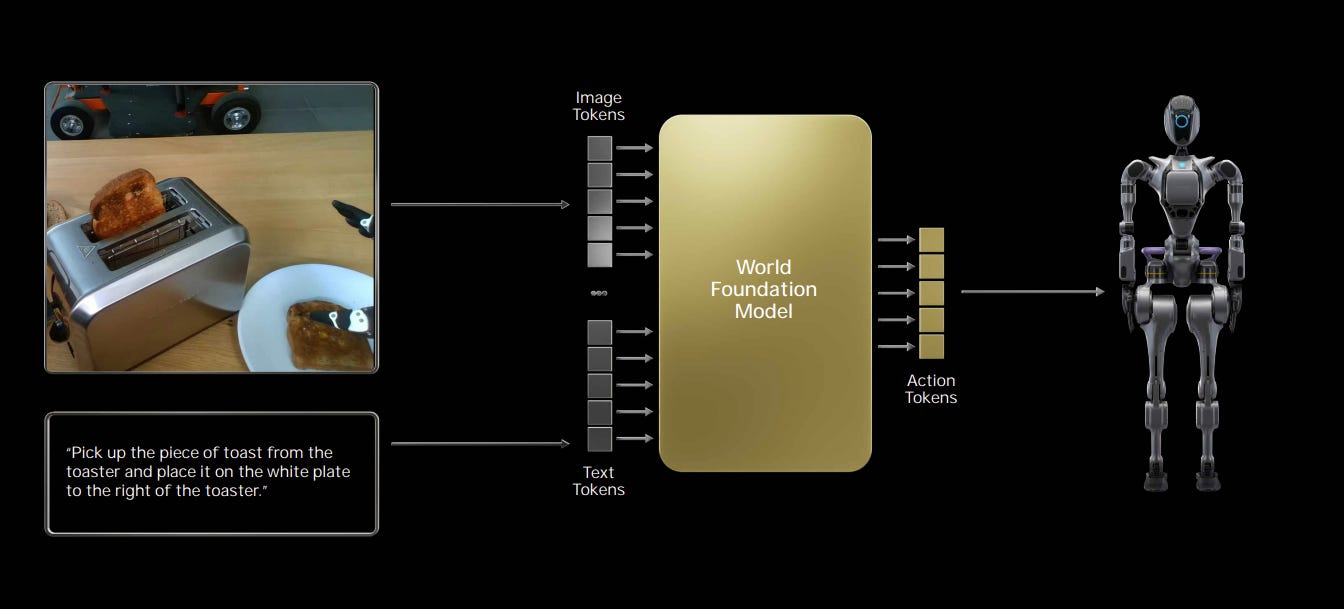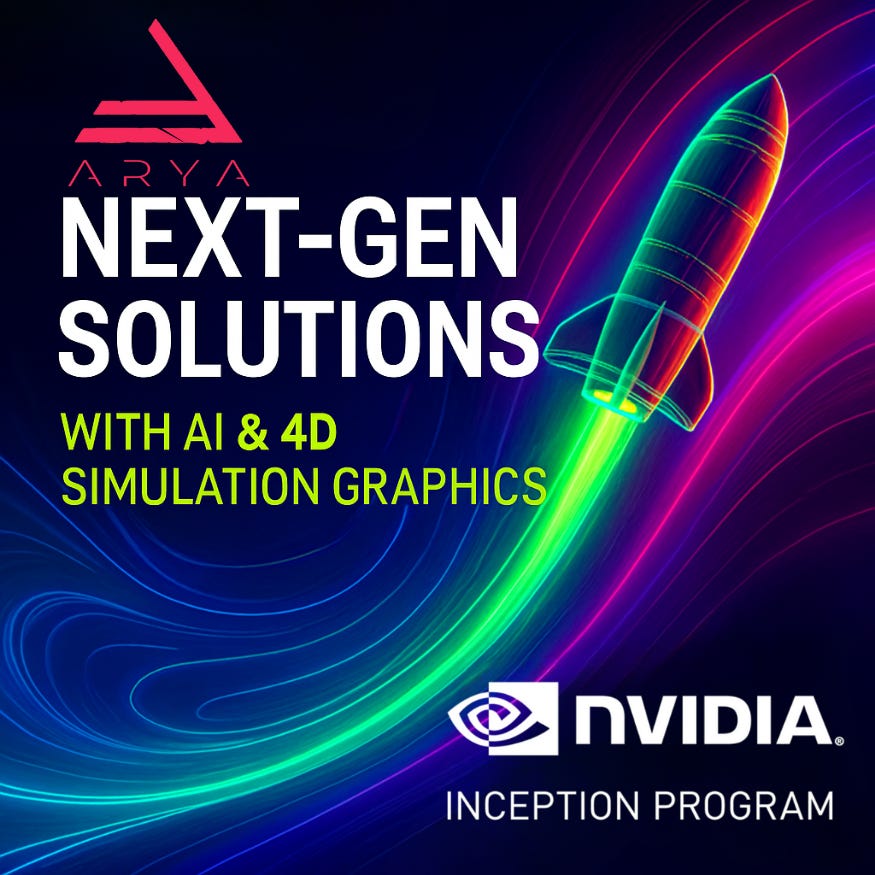TECH-EXTRA: How Could AI Design A Better World? (images & charts)
Deep Dive into World Foundation Models and the Future of Physical Reality
Tech Extra—Silicon Sands News, written for leaders across all industries, is an in-depth explanation of the challenges facing innovation and investments in Artificial Intelligence.
Silicon Sands News is read across all 50 states in the US and 117 countries.
Join us as we chart the course towards a future where AI is not just a tool but a partner in creating a better world for all. We want to hear from you.
A New Category of Technology
In late 2022, Large Language Models started a social and economic transformation unlike any seen since the last major industrial revolution. As the next generation of AI architectures begins to mature, we will see another shift as significant as the Internet or mobile computing. The most promising emerging model that promises to reshape our relationship with the physical world fundamentally is the World Foundation Model (WFM). These are foundational AI systems that learn the dynamics of reality to create interactive, high-fidelity digital twins of virtually anything in the physical world. From the intricate dance of molecules in a new drug to the complex aerodynamics of a next-generation aircraft, WFMs are poised to unlock capabilities in design, testing, and optimization in unprecedented ways.
This is not an incremental improvement over existing digital twin technologies. It is a category-creating technology that will transform how humanity conceives, designs, tests, and optimizes the physical world. Just as the Internet created entirely new industries and business models, WFMs will unlock new paradigms for innovation across every sector of the physical economy. It will collapse multiple markets and software segments. This week will provide a comprehensive deep dive into the world of WFMs, exploring the technical foundations, market landscape, key players, and the profound implications for our future.
Understanding WFMs
WFMs represent a convergence of multiple advanced AI technologies, combining the pattern recognition capabilities of large language models with the physics understanding of traditional simulation engines. At their core, WFMs are generative AI models that understand the dynamics of the real world, including physics, spatial properties, contextual relationships, and temporal evolution, unlike traditional AI systems that operate primarily on statistical patterns. In some implementations, WFMs can go as far as to incorporate fundamental physical laws to create deterministic, physics-accurate simulations of reality.
The technical architecture of WFMs typically involves several key components working in concert: a way to capture real-world physics interactions, a temporal consistency layer, a simulation layer and a generation/rendering layer.

In traditional probabilistic approaches to WFMs, the foundation layer consists of transformer-based neural networks trained on massive datasets of video and sensor data that capture real-world physics interactions. These models learn to predict how objects move, interact, and evolve based on the fundamental laws of physics rather than purely statistical correlations. The tokenization layer converts continuous physical phenomena into discrete tokens that can be processed by the neural network, similar to how language models tokenize text, but far more complex given the multi-dimensional nature of physical reality.
NVIDIA's recently released Cosmos platform 1 exemplifies the state-of-the-art in WFM architecture. The Cosmos WFM Platform provides developers with tools to build customized WFMs for Physical AI applications. The platform includes both diffusion-based and autoregressive transformer models, trained using continuous and discrete latent representations of videos, respectively. The diffusion models generate videos by gradually removing noise from a Gaussian noise video, while autoregressive models generate videos piece by piece, conditioned on past generations following a preset order.
The data requirements for training effective WFMs are staggering. NVIDIA's Cosmos platform leverages approximately 100 million video clips ranging from 2 to 60 seconds, extracted from a 20-million-hour-long video collection. This massive dataset exposes the model to diverse visual experiences and physics interactions, enabling it to become a generalist WFM. The video data curation pipeline uses visual language models to provide captions for every 256 frames, creating rich semantic understanding alongside visual learning.
The tokenization challenge for WFMs is particularly complex. Unlike text tokenization, video tokenization must compress rich visual information into compact tokens while preserving the original content and physics relationships. This requires sophisticated encoder-decoder architectures that can handle both continuous tokens (vectors) for diffusion models and discrete tokens (integers) for autoregressive models. The compression must maintain temporal consistency and physical accuracy while being computationally tractable for training and inference.
Matrix-Game 2, developed by Skywork AI, demonstrates another approach to WFM architecture focused on interactive world generation. With over 17 billion parameters, Matrix-Game enables precise control over character actions and camera movements while maintaining high visual quality and temporal coherence. The model adopts a controllable image-to-world generation paradigm, conditioned on reference images, motion context, and user actions. This represents a significant advancement in making WFMs interactive and controllable rather than purely generative.
The training methodology for WFMs typically involves a two-stage process. The first stage performs large-scale unlabeled pretraining for environment understanding, exposing the model to diverse physics scenarios and visual experiences. The second stage involves action-labeled training for interactive video generation, where the model learns to respond to specific inputs and controls. This approach allows WFMs to develop a general understanding of physics before specializing in particular applications and use cases.
The computational requirements for WFMs are substantial but manageable with modern infrastructure. Training typically requires large GPU clusters with hundreds or thousands of high-end graphics cards, similar to the requirements for training large language models. However, the inference requirements can be optimized for specific applications, making deployment feasible for many use cases. The key is leveraging cloud-based infrastructure and specialized hardware optimizations to make WFMs accessible to developers and organizations without massive computational resources.
In probabilistic approaches to WFMs, there is a fundamental departure from traditional AI approaches to the physics accuracy. However, these approaches are still probabilistic and still struggle to reproduce highly accurate physics representations. In many use cases, this is not an issue, for example, in content generation for rendering scenes or the design of non-structural elements. However, for many use cases, near-perfect physics representation is critical. For example, designing a part for an aerospace or pharmaceutical application.. This enables them to generate predictions and simulations that are not only visually convincing but also more physically accurate and more consistent with real-world behavior. This physics-perfect approach is crucial for applications where accuracy and reliability are paramount, such as engineering design, safety testing, and regulatory compliance.
The temporal consistency challenge in WFMs is addressed through sophisticated attention mechanisms and memory architectures that maintain coherent states across extended periods. Traditional AI models often suffer from drift and inconsistency when generating long sequences, but WFMs use physics constraints and temporal modeling to maintain consistency over extended simulations. This enables applications that require long-term prediction and planning, such as climate modeling, urban planning, and complex system optimization.
The scalability of WFMs is achieved through hierarchical modeling approaches that can represent phenomena at multiple scales simultaneously. From molecular interactions to planetary systems, WFMs can model physics at the appropriate level of detail for each application. This multi-scale capability is essential for real-world applications that involve complex systems with interactions across multiple scales of space and time.
The integration capabilities of WFMs enable them to work seamlessly with existing design and engineering tools. Rather than replacing existing workflows, WFMs can augment and enhance traditional approaches by providing physics-accurate simulation capabilities that were previously impossible or prohibitively expensive. This integration approach accelerates adoption and maximizes the value of existing investments in tools and processes.
The validation and verification of WFMs requires sophisticated testing frameworks that can assess both visual quality and physics accuracy. Traditional computer vision metrics are insufficient for evaluating WFMs, which must be assessed on their ability to accurately model physical phenomena and maintain consistency with known physics laws. This has led to the development of specialized benchmarks and evaluation frameworks designed explicitly for WFM applications.
The emerging field of WFMs represents a convergence of multiple advanced technologies, including computer vision, natural language processing, physics simulation, and high-performance computing. The technical challenges are substantial, but the potential applications and benefits are transformative. As these technologies mature and become more accessible, they will enable new forms of innovation and creativity that were previously impossible, fundamentally changing how we design, test, and optimize the physical world around us.
Persistent Challenges in WFMs
Despite the remarkable progress in WFM development, several fundamental challenges continue to limit its widespread adoption and effectiveness. These challenges span technical, computational, and practical domains, requiring innovative solutions and breakthrough approaches to realize the full potential of WFM technologies.
Keep reading with a 7-day free trial
Subscribe to Silicon Sands News to keep reading this post and get 7 days of free access to the full post archives.




